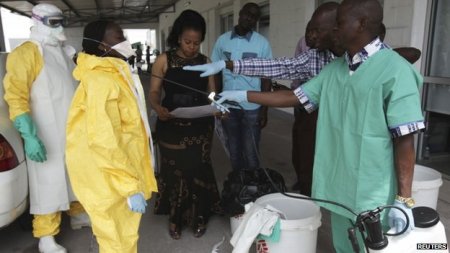L
LequteMan
Guest
The World Health Organisation on Thursday announced an end to the latest flare-up of the Ebola virus in Liberia, West Africa.
This is a milestone that marks the first time since the epidemic began in 2013 that there have been no known cases of the disease in 42 days.
Here are 9 facts about the virus and how it ravaged the region:
* The epidemic began in eastern Guinea in December 2013 and swept through Liberia and Sierra Leone. Liberia was the last nation to be declared Ebola-free
* The Ebola virus infected more than 28,600 people and killed 11,300 of them in the three worst affected nations - more cases and more deaths than in all previous outbreaks combined
* Ebola cases were also recorded in seven other countries, including the United States, Spain and Nigeria, but on a much smaller scale, totalling 36 cases and 15 deaths
* The World Health Organization (WHO) declared the West Africa Ebola outbreak a Public Health Emergency of International Concern on Aug. 8, 2014
* On average, around 50 percent of humans infected in an outbreak die, though in past outbreaks the fatality rate has varied from 25 to 90 percent
* The virus is transmitted to people from wild animals such as fruit bats and monkeys and spreads among humans through contact with bodily fluids of an infected person
* Medical experts believe new Ebola cases in Liberia after it had twice been declared Ebola-free were due to sexual contact as the virus lives in semen longer than the 21-day incubation period elsewhere in the body
* The worst affected countries were, at the start of the epidemic, recovering from years of conflict and instability and had weak health systems and a shortage of expertise and infrastructure
* The Ebola virus first appeared in 1976 in two simultaneous outbreaks, one in Nzara, South Sudan, the other in Yambuku, Democratic Republic of Congo, in a village near the River Ebola
This is a milestone that marks the first time since the epidemic began in 2013 that there have been no known cases of the disease in 42 days.
Here are 9 facts about the virus and how it ravaged the region:
* The epidemic began in eastern Guinea in December 2013 and swept through Liberia and Sierra Leone. Liberia was the last nation to be declared Ebola-free
* The Ebola virus infected more than 28,600 people and killed 11,300 of them in the three worst affected nations - more cases and more deaths than in all previous outbreaks combined
* Ebola cases were also recorded in seven other countries, including the United States, Spain and Nigeria, but on a much smaller scale, totalling 36 cases and 15 deaths
* The World Health Organization (WHO) declared the West Africa Ebola outbreak a Public Health Emergency of International Concern on Aug. 8, 2014
* On average, around 50 percent of humans infected in an outbreak die, though in past outbreaks the fatality rate has varied from 25 to 90 percent
* The virus is transmitted to people from wild animals such as fruit bats and monkeys and spreads among humans through contact with bodily fluids of an infected person
* Medical experts believe new Ebola cases in Liberia after it had twice been declared Ebola-free were due to sexual contact as the virus lives in semen longer than the 21-day incubation period elsewhere in the body
* The worst affected countries were, at the start of the epidemic, recovering from years of conflict and instability and had weak health systems and a shortage of expertise and infrastructure
* The Ebola virus first appeared in 1976 in two simultaneous outbreaks, one in Nzara, South Sudan, the other in Yambuku, Democratic Republic of Congo, in a village near the River Ebola


